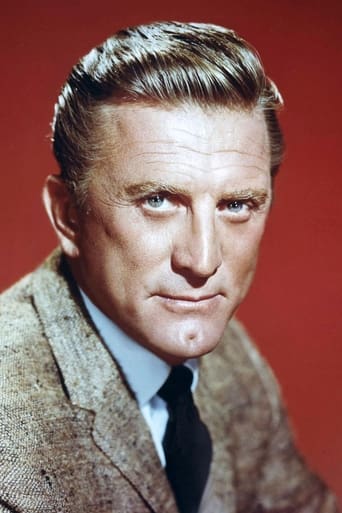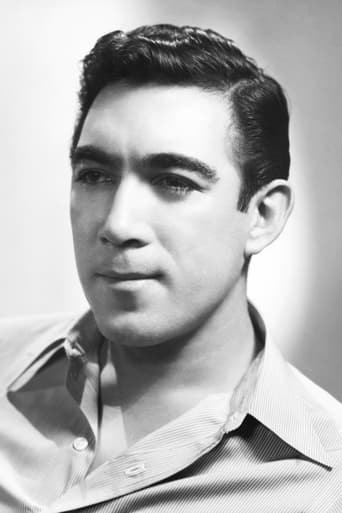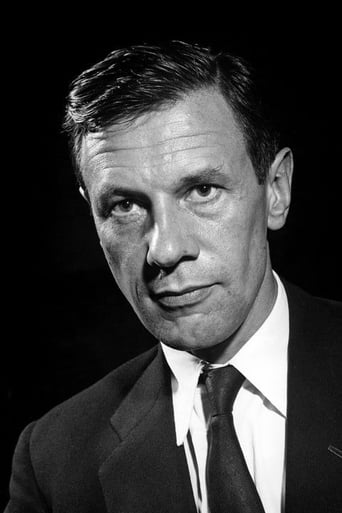Moustroll
Good movie but grossly overrated
Afouotos
Although it has its amusing moments, in eneral the plot does not convince.
Kidskycom
It's funny watching the elements come together in this complicated scam. On one hand, the set-up isn't quite as complex as it seems, but there's an easy sense of fun in every exchange.
Tobias Burrows
It's easily one of the freshest, sharpest and most enjoyable films of this year.
Dalbert Pringle
(*Favourite movie quote*) - "The pictures come to me as in a dream."The agony of one man's life.... Vincent Van Gogh painted the way other men breathe.After Rembrandt, Van Gogh is considered to be the greatest of all the Dutch painters. His obsession with painting, combined with serious mental illness, propelled him through a life full of failures and unrewarding relationships.Throughout his life, Van Gogh managed to earn some respect from his fellow painters, especially that of Paul Gauguin, but he never, ever got along with any of these men. Surprisingly enough, in his entire lifetime Van Gogh only managed to sell just one of his paintings.Released in 1956 - "Lust For Life" is a really fine movie-production. Many of the locations used for filming were actual places that Van Gogh had visited during his short life. Actor, Kirk Douglas puts in a dynamite performance as the archetypical tortured artist-genius.
alec-woodward
Vincent Van Gogh was Kirk Douglas's finest role, and I believe no other actor could have bettered Douglas's performance. I have always wondered how much Kirk identified with Van Gogh, and his state of mind.
frankwiener
If you're in the mood for for mirth and gaiety, you might want to postpone viewing this very important film for another day. Try "Mary Poppins" instead, but definitely come back to this because it must be seen in order to be fully appreciated.Meticulously directed by Vincente Minelli and very well written by Norman Corwin, based on the book by Irving Stone, this movie is about a critical period in the tragic and tortured life of Dutch painter Vincent Van Gogh. I found it highly ironic that this man enjoyed such little beauty during his life, yet, at the same time, he was able to create such serene and colorful beauty on the canvas. The fact that he could appreciate beauty to this degree made his life all the more sad to me. His impoverished condition and extreme alienation from the society around him also serve as stunning contrasts from the stratospheric prices of his paintings today and the widespread posthumous love and recognition that his works have so justifiably achieved.In spite of the sadness and the tragedy of Van Gogh's life, I was very inspired by his tough perseverance and determination in developing his painting ability and style. Rather than shying away from valid criticism, he sought it from qualified individuals, directly faced it, and effectively responded to it. Most aspiring artists and writers cannot rely upon God-given talent alone. They still must work very hard in order to produce the very best of their ability. By his example, Van Gogh proved this to us. By pure coincidence, I happened to watch this movie on Kirk Douglas's 100th birthday, December 9, 2016. While other IMDb reviewers found that he overacted the part, I strongly disagree with them. Not only did he physically resemble the true Van Gogh, but he very credibly brought to life the intense, mentally tormented inner being of the painter as well. I'm very happy that Anthony Quinn won an Oscar for his 22 minute role but also regret that Douglas went home empty handed that night and on every other Oscar night until he finally received much deserved honorary recognition by the Academy in 1996 at the age of 80. Happy Birthday, Mr. Douglas. Well done, sir!
weezeralfalfa
One of my top 10 favorite films from the mid-20th century era. Star Kirk Douglas had previously ("Young Man with a Horn") played a character obsessed with playing improvised jazz on the trumpet, based on the self- destructive life of the jazz enthusiast Bix Beiderbecke. Many details of the life of Bix or in the novel that the film was based upon were fictionalized. Now, Douglas played another doomed tortured artist in Vincent Van Gogh. Unlike Bix, Vincent is well recognized by the general public. Unlike the film relating to Bix, this film is about as true to the historical details as can be expected for a film, especially since it is based upon an Irving Stone novel of the same title published in 1934. Douglas makes a very convincing Vincent, both in his physical appearance and in his acting. Tony Quinn was also an excellent choice for Vincent's sometimes roommate: Paul Gauguin. Besides acting, Quinn had a longstanding interest in making paintings and sculpture. James Donald is good as Vincent's brother Theo, who made Vincent's career as an artist possible with his monthly allowance to the destitute Vincent. Not included in the film is mention of Theo's death, which occurred a mere 6 months after Vincent's death, due to cerebral syphilis. We can usefully divided the film into 5 segments. The first covers his problems trying to become an ordained minister or a missionary, including his time spent as a missionary in a very poor coal town, where he had trouble relating to the people until he took to spending some time digging coal and digging through a huge pile of rejected rock that included some coal, like the women did while their husbands were down below. Covered with coal dust at times, and living in a primitive shack, the church elders were not pleased when they came to check on him. He called them hypocrites and claimed he was more Christ-like than they were. At home, he said that he didn't believe in the God of the clergymen; he believed in a God of love. That was the end of his shaky ministerial career. The second segment of the film covers the period when he has taken up art work, but only produces black and white drawings. During this period, his cousin Kay rejects his marriage proposal, which sends him into a psychological tailspin for a period. He takes up with a laundress/prostitute for a period, but she eventually leaves. The third segment covers his discovery and development of color painting, before inviting Paul Gauguin to come live and work with him.The 4th segment covers his association with Gauguin. Mostly, they quarrel about painting styles and keeping the place reasonably neat. Vincent runs after Gauguin with a razor, as Gauguin is leaving. Vincent then cuts his ear off with a knife and is laid up for a while.The final segment is his post-Gauguin life. This includes his stay at the St. Remy asylum, then with Dr. Gachet. He has periodic seizures. At St. Remy, initially, he's not allowed to paint. Later, he is allowed to paint in moderation, as painting seems to be necessary to promote his sanity. But, this does not cure his loneliness. He can't seem to relate to non-artists, and his work is a solitary one.Tony Quinn received the Best Supporting Actor Oscar for his relatively brief screen time. I think Douglas was more deserving of the Best Actor Oscar.In contrast to Vincent, Gauguin had achieved financial success in his 20s, from stock brokering and art dealing. Then, the stock market crashed and the market for artwork mostly dried up. Thus, he abandoned his family, and took up producing artwork, along with other odd jobs,often just barely surviving Today, his paintings, sell for $ millions, like Vincent's. Gauguin would eventually move to Tahiti and other islands administered by France, thus distancing himself from western society. Many of his most famous paintings were done on these islands. The novel "The Way to Paradise" is based on this period in Gauguin's life and that of his grandmother, who also had big issues with conventional society.The film lost $2,000,000.upon initial release. Perhaps its 2 hour length was too long for many, and its cost too great?Some of Vincent's best known paintings are shown periodically in the second half.Director Vincent Minnelli had previously directed Douglas in the acclaimed "The Bad and the Beautiful", about Hollywood politics. Parts of the present film were filmed in several locations that Vincent lived in.





